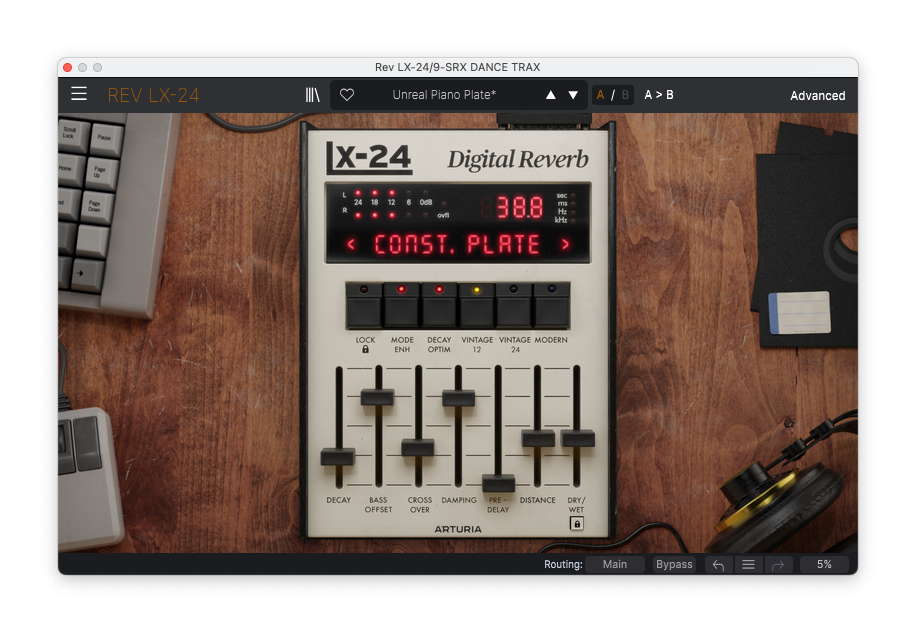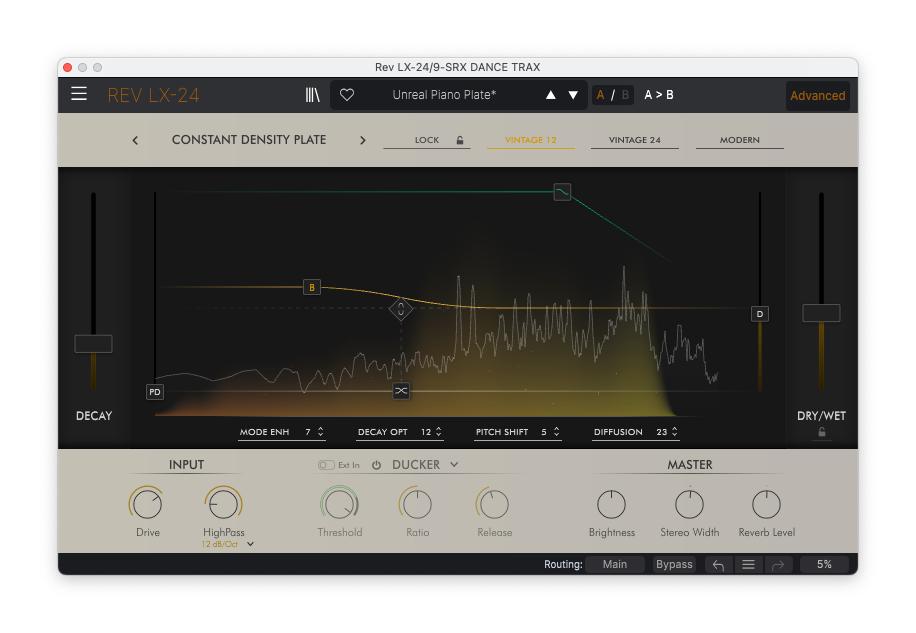The Lexicon 224 digital reverb has one of the best-known, best-loved reverb tails of all time. That also means it’s been frequently modeled and imitated. But Arturia has added the potential to take the 224 in an entirely new version – once you take the plunge and hit the “Advanced” button for a whole new view.
Look, if you just want a perfectly accurate version of the Lexicon 224 running on your computer, that’s… probably Universal Audio’s Lexicon 224, the one that’s also Lexicon-licensed. Since the original uses digital, UAD’s version even has the exact algorithms. Of course, it better be good, as even on sale the plug-in here is well into the price territory of some nice hardware reverbs.

Lexicon name aside, the Arturia LX-24 certainly sounds like you’d expect a 224 to sound. And it looks like a 224, if that’s what you want. If you don’t have a Lexicon model already, it’s probably worth owning, and if it finds its way into the FX Collection later, you’ll absolutely enjoy having it – it’s a no-brainer edition.
That is, if all Arturia did was make a slick 224 that’s way more affordable than the other option I, uh, just named – that’d be enough! Great!
But I’m not here to talk about another 224 plug-in. No, what makes the LX-24 worth talking about is that it has another side – literally.
The ‘Advanced’ plug-in has far more in common with Arturia’s recent homegrown device interfaces, like the Efx-FRAGMENTS granular tool and the excellent Augmented line. You get a nice, flat, non-skeuomorphic UI, a live FFT display, and extra sound tweaking options, without sacrificing anything from the 224 model. All you miss is some pictures of faders.
I mean, it’s fun to sometimes have the restrictions of the 224 controls. Sometimes. And sure, you could ask why you’d not just use a normal modern reverb.
But it turns out those Lexicon-style algorithms and a quality control on the converter are really useful inside a modern software-style reverb. (Some other software effects have used similar “low-quality” modes you can use creatively – see Ableton.)
Just what do you get inside the LX-24 once you’re in Advanced?

- All 8 algorithms (room / plate / hall / chamber variations from the 224)
- Vintage/modern converter modes: Original filtered 12-bit converter, a modern unfiltered 24-bit converter, or a kind of vintage hybrid (24-bit but with filter). More bits and unfiltered isn’t always better; those filtered versions actually sound more like an acoustic plate or echo chamber.
- Predelay and distance (on either side of the spectrum view)
- Crossover frequency (and if you never quite understood crossover frequency, it’s much easier to grok when you see it overlaid on a spectrum!)
- Bass offset
- Drive and high-pass filter with both 24/12 dB slopes
- Ducking with threshold / ratio / release
- Reverb tail modulation (called “mode enhancement,” a phrase I find insanely confusing, but hey)
- Pitch shift – that’s applied to that reverb tail modulation
- Diffusion
- Decay optimization: a dynamic alteration on just the reverb tail
- Master brightness, stereo width, and reverb level controls
Plus nicest of all, there’s an X/Y control combining decay and crossover frequency. And while the list I just gave is imposing, it all fits neatly into the UI. It’s a terrific design.
It’s worth saying that I think the most versatile and underrated reverb in Arturia’s existing collection is not the plate you might be tempted to go to, but their original REV-INTENSITY. And at the risk of getting into the skeuomorphic debate, I would love it if Arturia refreshed INTENSITY with this style of UI. So much of the cleverness of that reverb gets lost in a made-up hardware look with wasted space. I’m sure that’ll upset someone. Maybe there can be a switch.
Anyway, enough. LX-24 is another great reverb, the 224 still holds up, that Lexicon reverb tail always hits, and enjoy!
That’s enough talk when we could be just listening to reverb tails.
https://www.arturia.com/products/software-effects/rev-lx-24/overview
[Affiliate link] Intro sale price on Plugin Boutique
More to get you started:
In a couple weeks, I’m going to put all the reverbs I’ve reviewed in the past year into one channel and play them all at once. Get ready.